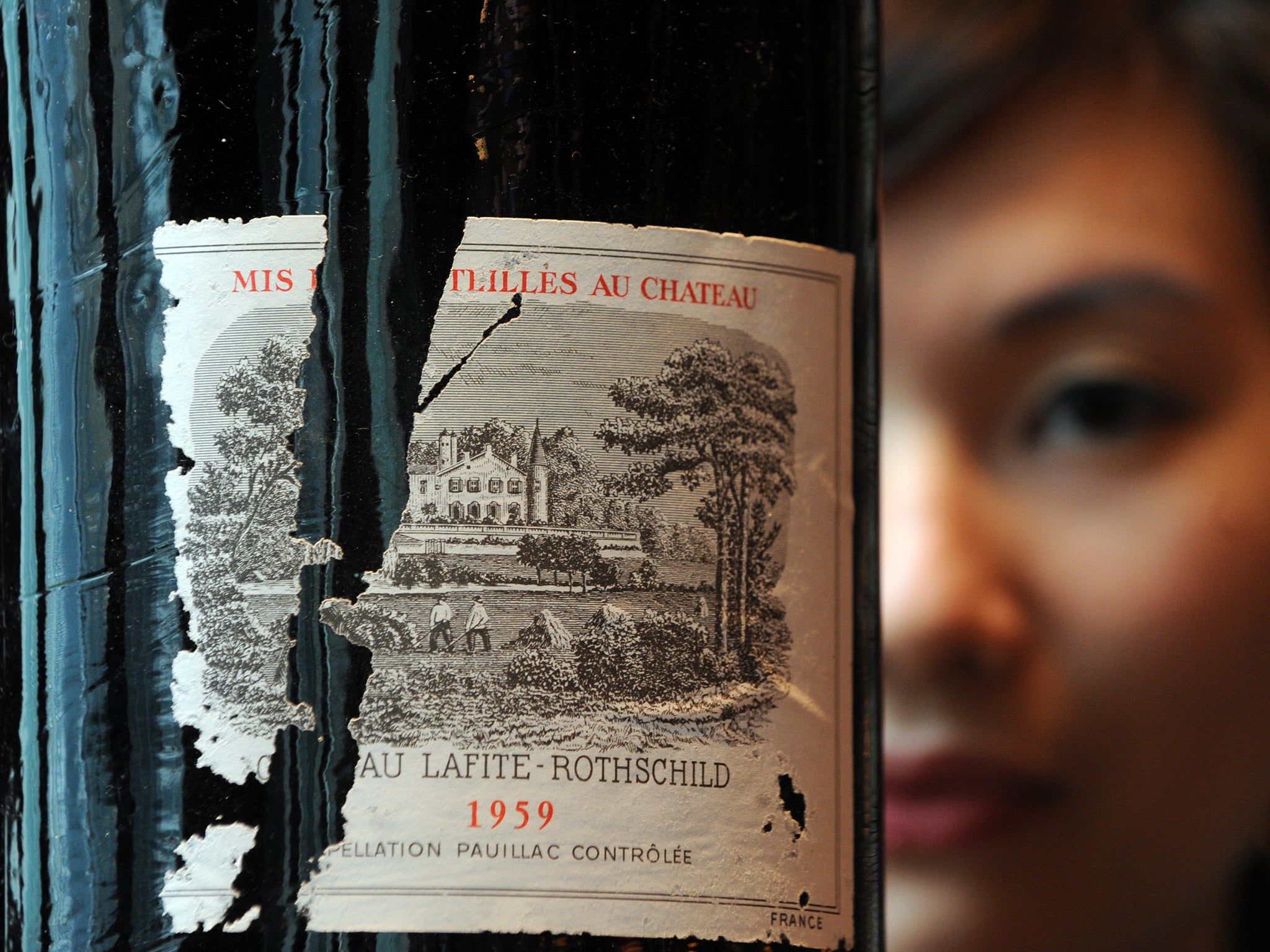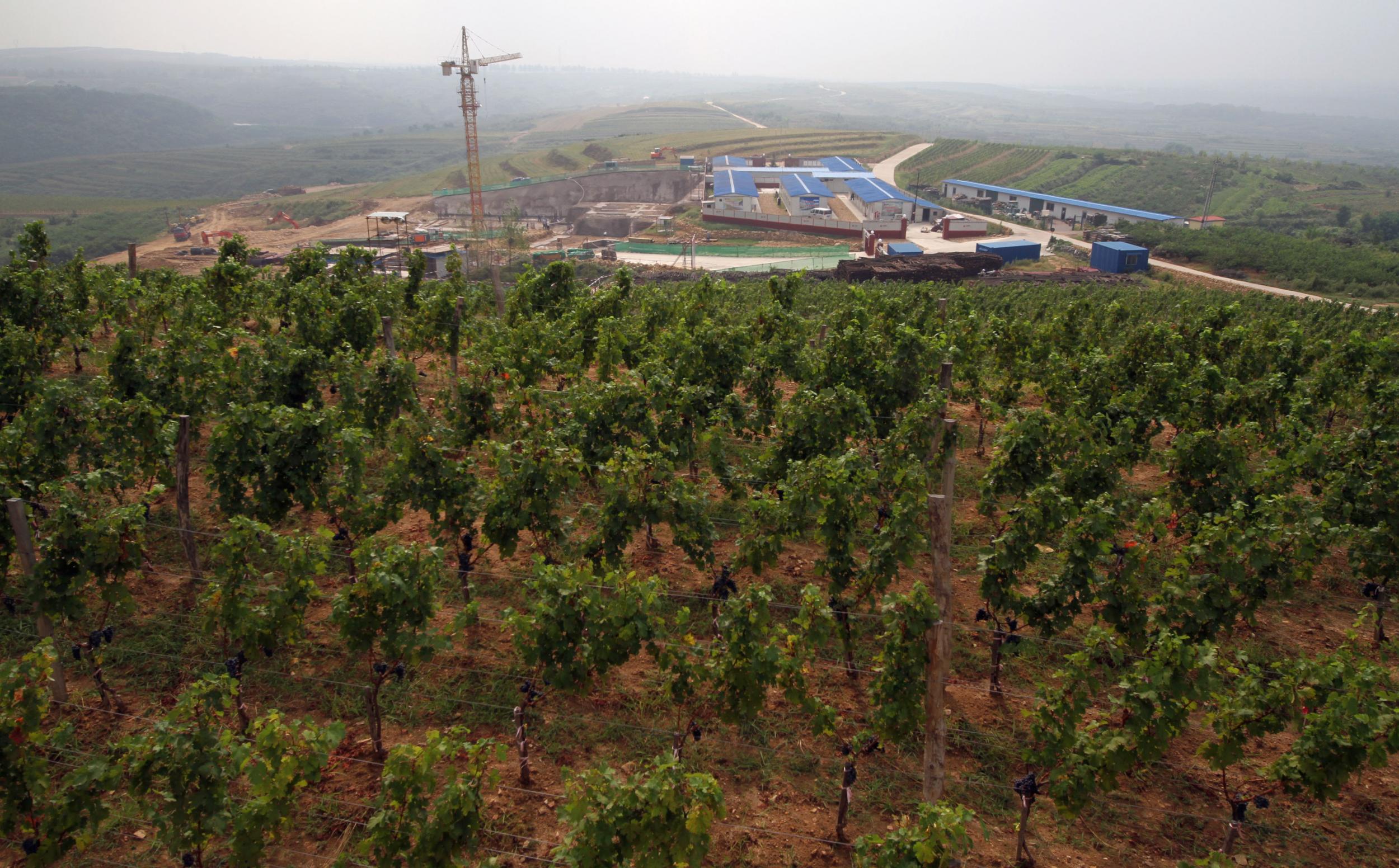Why the Rothschilds have opened a winery in China to produce pricey Lafite wine
‘That’s really the bet that we are taking: to make a high-end Chinese wine for the Chinese to be proud of,’ Saskia de Rothschild tells Amy Qin

Your support helps us to tell the story
From reproductive rights to climate change to Big Tech, The Independent is on the ground when the story is developing. Whether it's investigating the financials of Elon Musk's pro-Trump PAC or producing our latest documentary, 'The A Word', which shines a light on the American women fighting for reproductive rights, we know how important it is to parse out the facts from the messaging.
At such a critical moment in US history, we need reporters on the ground. Your donation allows us to keep sending journalists to speak to both sides of the story.
The Independent is trusted by Americans across the entire political spectrum. And unlike many other quality news outlets, we choose not to lock Americans out of our reporting and analysis with paywalls. We believe quality journalism should be available to everyone, paid for by those who can afford it.
Your support makes all the difference.In China, the stories about Chateau Lafite Rothschild are as notorious as the Bordeaux wine estate is legendary. There are the tales – often repeated, never confirmed – of wealthy Chinese businessmen chugging Lafite mixed with Sprite. Or the time a Chinese official reportedly said at least half the Lafite sold in China was fake. More recent was a government crackdown on corruption that turned up huge stashes of the wine, worth tens of thousands of dollars, in the hands of local officials.
But the latest chapter in the saga of Lafite is something quite different: the company behind the famous name, Domaines Barons de Rothschild (Lafite), is now the producer of a world-class wine made entirely in China.
Last month, Lafite released its first vintage from grapes grown at Domaine de Long Dai, its estate in Shandong province. The centuries-old French winery is betting that it can ride out China’s economic slowdown and turn nationalistic headwinds to its advantage with a locally made product.
Wine has been made from grapes in China for centuries, but it was never as popular as other drinks and the country has not been known for its winemaking. It wasn’t until recently that the country’s producers began to aim for a higher quality that might appeal to oenophiles, mostly on a small scale.
“When I was starting to visit, a lot of the high-end collectors were saying, ‘We’re never going to drink Chinese wine,’” says Saskia de Rothschild, who succeeded her father to become chairwoman of Lafite last year. “That’s really the bet that we are taking: to make a high-end Chinese wine for the Chinese to be proud of.”
Still, Lafite’s winemakers have been at work during a difficult time for companies catering to China’s elite. The campaign against corruption fought by China’s president, Xi Jinping, dampened extravagant spending for years, with sales of wine – a favourite gift among the nation’s political and business leaders – hit particularly hard. Last year, China’s wine imports by volume declined for the first time in five years, according to a report by Wine Intelligence, a research firm in London.
For foreign businesses, a second challenge has been rising nationalist sentiment among Chinese consumers. The National Basketball Association recently found itself at the centre of a firestorm after the general manager of the Houston Rockets posted support on Twitter for the Hong Kong protests, which the Chinese widely see as a separatist movement. Coach, Givenchy and Versace each apologised after drawing fierce criticism for T-shirts that were seen as having undermined China’s sovereignty by identifying the semi-autonomous regions of Hong Kong and Macao as separate countries.
But Lafite is seeking to tap into that patriotic sentiment by offering a wine made in China by a mostly Chinese team. “Throughout the years, we have seen the Chinese consumer change, and ‘Made in China’ has actually become something that people are proud of,” says Ms Rothschild, a former journalist.

Ms Rothschild spoke at the new estate, which is nestled among vineyards and apple orchards in Shandong, a coastal province. On a visit in mid-September before the official launch, bright-red signs extolling the Chinese Communist Party dotted the drive through terraced vineyards up to the estate.
The 2017 vintage from Domaine de Long Dai is a blend of cabernet sauvignon, cabernet franc and marselan grapes. Marselan is a cross between cabernet sauvignon and grenache that is popular among Chinese wine drinkers. In a July review of the first vintage, Jancis Robinson, a British wine writer, called it a “very good debut effort indeed”.
“As for the wine, it is suitably Lafite-like,” she wrote on her website, adding that it was “as bone dry as the bordeaux first growth, utterly correct if not absolutely stunning”.
With 74 acres of vineyards, production at the new estate is modest. Only 2,500 cases of the 2017 vintage will be sold, mostly in China, compared with the 16,000 that Château Lafite Rothschild in Bordeaux produces on average. Each bottle is equipped with a special chip technology to guard against counterfeiting, which has been a major problem for Lafite in China over the years.
As for the wine, it is suitably Lafite-like, as bone dry as the bordeaux first growth, utterly correct if not absolutely stunning
Bottles of the 2017 Long Dai are priced at 2,388 yuan, also known as renminbi (£265). That is comparable to a bottle of high-end baijiu, a grain spirit known as China’s national drink, though far less than some older vintages of Chateau Lafite Rothschild, which can sell for hundreds of thousands of dollars.
On a recent blue-skied afternoon in Mulangou, a village just steps away from Long Dai, residents heaped praise on the Lafite estate for bringing jobs and distributing gifts during the holidays. But when asked if he would be drinking the Long Dai wine, Huang Chuanjun, 70, a regular beer drinker, shook his head. “It’s more expensive than gold!” said Huang, who was carrying a jug of soy sauce. “I wouldn’t even spend 100 renminbi on it. I can’t tell the difference anyway.”
The 2017 wine is the culmination of a project that began 10 years ago, when the Lafite brand was at the peak of its popularity in China. “Lafite” has been used in the names of Chinese apartment complexes and even barbecue restaurants, says Jim Boyce, founder of Grape Wall of China, an English-language blog about Chinese wine. “It’s attached to the idea of the quality of a lifestyle,” Boyce says.
But a number of high-end Chinese wines have emerged in the last decade, including Legacy Peak in Ningxia and Ao Yun, made from grapes grown in the Tibetan foothills and owned by LVMH Moet Hennessy Louis Vuitton, the world’s largest luxury group. “The timing feels weird to me,” Boyce says of the Long Dai launch. “It feels like part of a trend that’s already had its moment.”
For Lafite, though, the estate in Shandong also offers a foothold into China’s growing market for pricey wines. It features a visitor centre and a so-called classroom for wine education, a first for a Lafite estate and a way to promote sales of the company’s other wines and overcome competition from Chinese competitors.
References to the Rothschild family, which has owned Lafite for more than 150 years, appear throughout. A video of Ms Rothschild in conversation with her father, Baron Eric de Rothschild, plays in the visitor centre. Paintings by her mother, the artist Maria-Beatrice Caracciolo di Forino, and copies of oil portraits of 19th-century Rothschilds adorn the walls of the buildings.
The company chose Shandong for its temperate winters and proximity to transportation hubs, bucking a trend among other wine producers that gravitated towards China’s western regions. But the site came with challenges. The winemakers have had to find a balance between the heavy monsoon rains in the summer and the dry spring seasons. There have also been recurring thefts of grapes by locals. Now, five guards watch over the vineyards at night. And, as is often the case for foreign companies in China, managing relations with the government has been tricky at times. Patience and precision, both crucial in making great wine, can be anathema to local officials who often have short-term growth targets.
In Penglai, hopes are high that the winery will spur the development of a tourism area similar to Napa Valley in California. Already, a medley of projects, including a Roman Colosseum look-alike, a development called Napa Village and a French-inspired chateau have sprung up in the area surrounding Domaine de Long Dai. “We had a lot of pressure from local officials to open,” says Olivier Tregoat, technical director of Lafite’s properties outside Bordeaux. “I would definitely have waited.”
© New York Times
Join our commenting forum
Join thought-provoking conversations, follow other Independent readers and see their replies
Comments